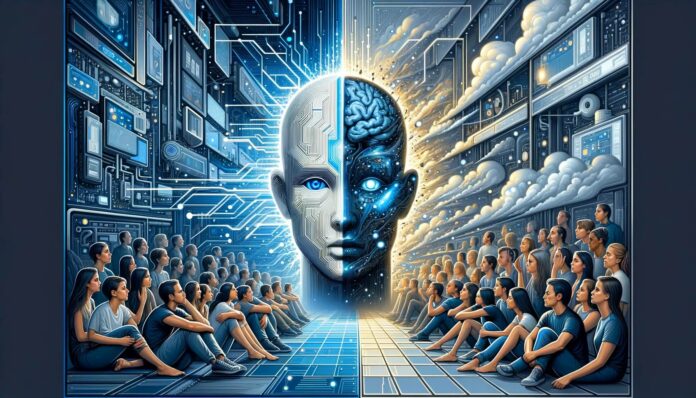OpenAI’s launch of its new text-to-video model, Sora, has stirred up considerable debate and concern among the public and AI community. Sora represents a significant leap in AI-generated video quality, addressing past issues like continuity error. Its lifelike simulations have amazed viewers, but also elicited a strong, and not entirely positive, reaction.
Sora’s unveiling has triggered a wave of social media outcry, a response that seems to have taken OpenAI by surprise, considering the positive reception to their previous releases of ChatGPT and other AI software.
Influential YouTuber MoistCr1TiKaL tweeted “I’m struggling to think of a single positive thing making realistic ai generated videos like this will bring.” Although he is popular and can get hundreds of thousands of views on his tweets, this one tweet got 8 million views, 153,000 likes and 11,000 retweets. Clearly the sentiment struck a nerve.
Adding to the confusion was a tweet from an OpenAI employee, which stated, “We very intentionally are not sharing it widely. Yet the hope is that a mini public demo kicks a social response into gear.” This tweet was later removed, leaving us wondering if Sora was announced to compete with Google’s Gemini launch – or was it to prepare the public for just how far AI has developed?
Jimmy Apples, an AI insider who has been notoriously accurate in previous predictions, suggested that OpenAI had access to Sora since March but chose to release it only recently, to prepare people for how far AI had advanced and potentially for a faster move to Artficial General Intelligence (AGI).
There has been tremendous progress in AI. Before Sora was unveiled, Google had launched it’s Gemini 1.5 Pro. This new release, a week after its Gemini 1.0 Pro launch, increased the capacity of its AI to an unheard of 700,000 words, 11 hours of audio or a full hour of video.
Earlier this year at CES, the Rabbit r1 demonstrated how a collaboration of AI agents are capable of learning and performing complex tasks that only a human could do previously. These agents are able to learn, plan and execute tasks directly on web pages and even using our laptops and phones – independently and autonomously.
Despite all this progress, it took the unveiling of Sora’s hyper realistic video, a simulation of reality, to catalyze this broader conversation about the future of AI, the potential early arrival of Artificial General Intelligence (AGI) and its profound impact on business and society.
Perhaps, as one commentator said, it took a visual simulation to really bring home the degree to which AI has advanced and that may be what has sparked this backlash.
